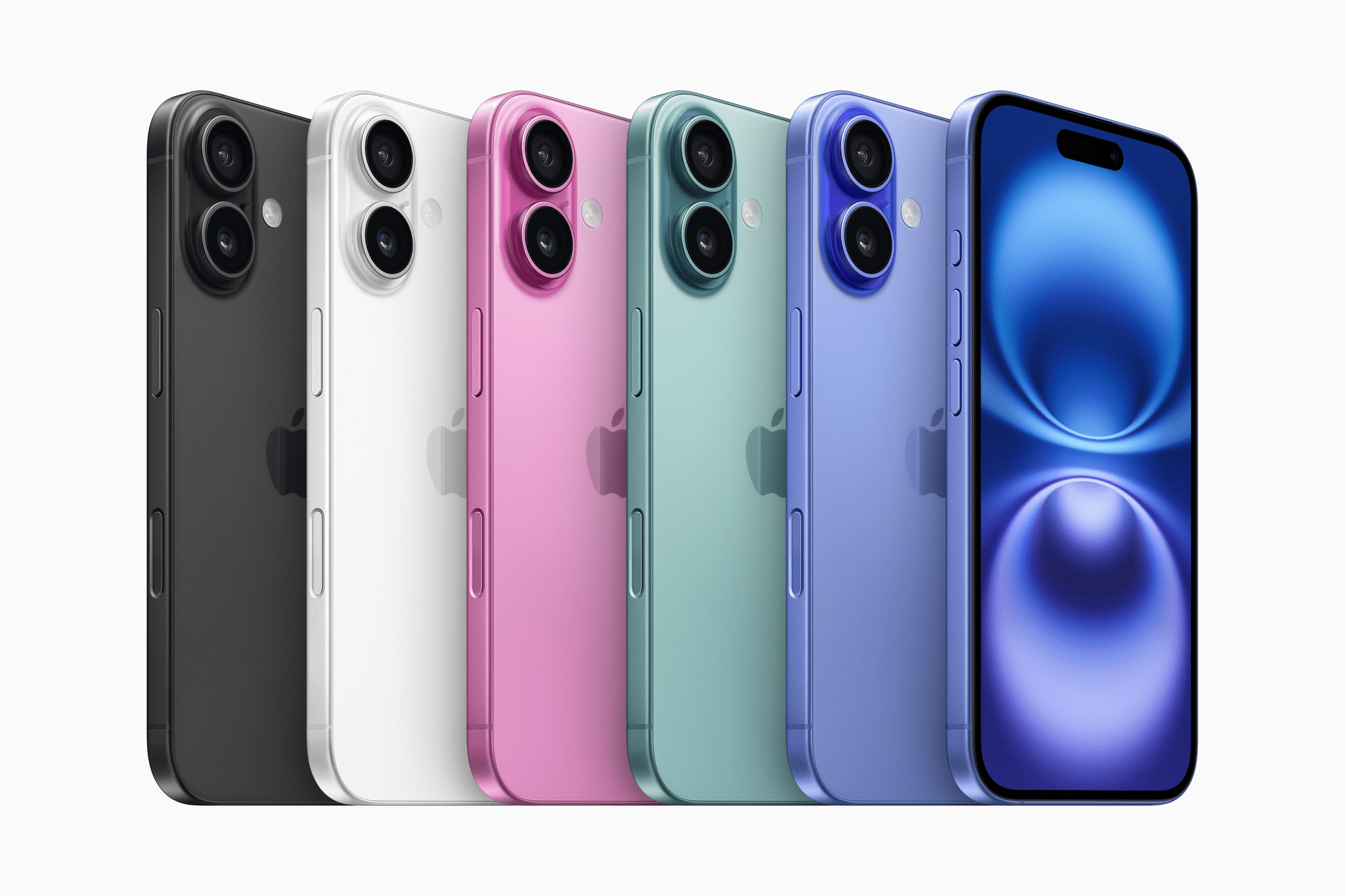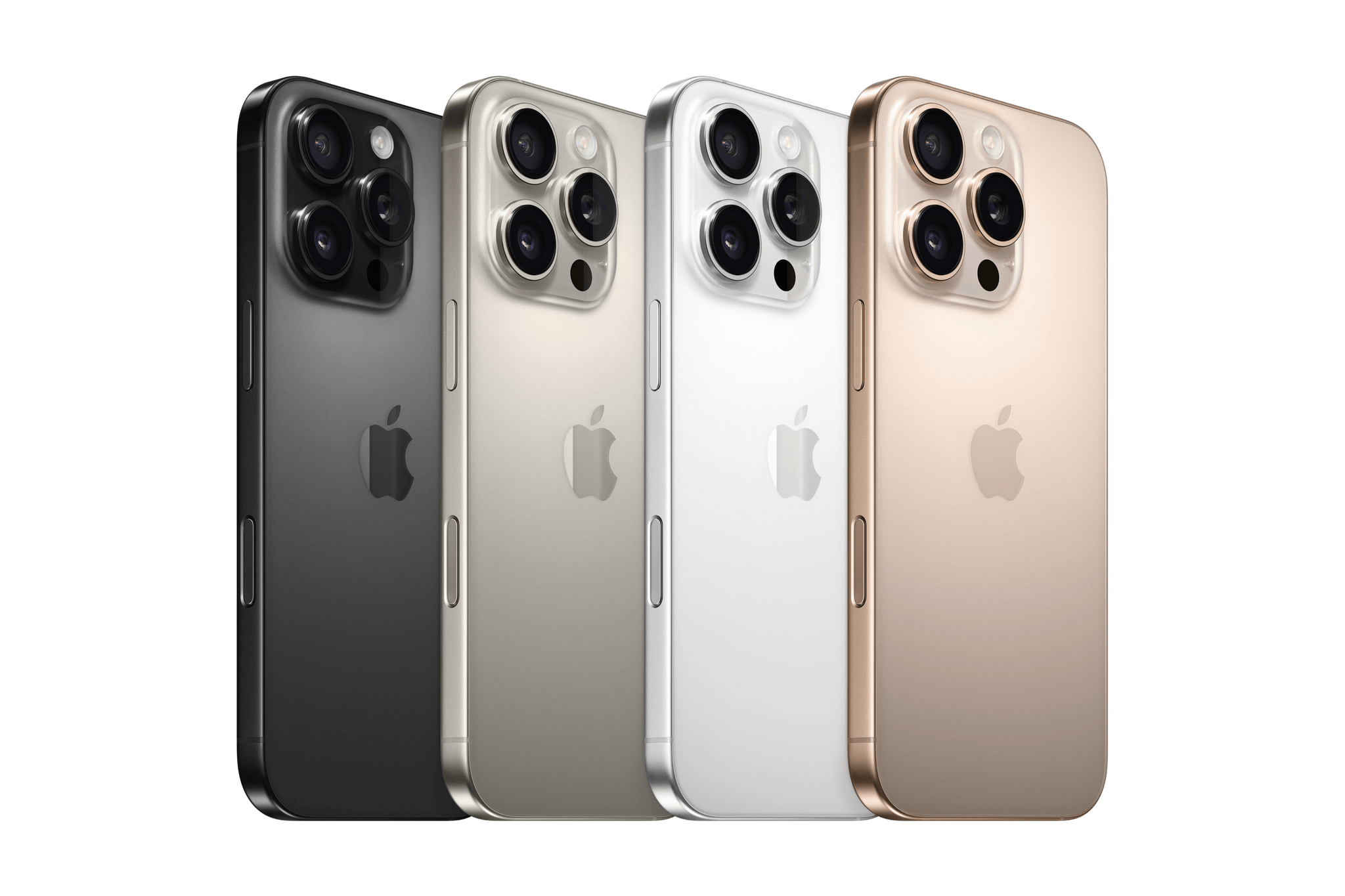Today, Apple unveiled this year’s iPhone lineup consisting of four devices: iPhone 16, iPhone 16 Plus, iPhone 16 Pro, and iPhone 16 Pro Max. There are noteworthy improvements and additions across the line, so let’s dive in to what these phones have to offer.
iPhone 16 and iPhone 16 Plus
The iPhone 16 and its larger-screened variant add not one, but two new hardware buttons this year. They also include improved cameras and an important processor bump.
The A18 chip is built on a second-generation 3nm process. It features a six-core CPU with two performance cores and four efficiency cores, a five-core GPU that enables hardware-accelerated ray tracing in games, and Apple’s new 16-core neural engine. Its increased memory and bandwidth make the iPhone 16 capable of running Apple Intelligence, the first non-Pro iPhone to do so. The chip is also more efficient, which, in combination with a bigger battery and better heat dissipation, results in what Apple calls a “big boost” to battery life.
The Action button is the latest iPhone Pro feature to make its way down to the standard line. Everything true of last year’s Action button applies to this one: its size and shape, the fact that it’s physically pressable, and its software capabilities. I imagine many iPhone 16 buyers will just use the Action button as a slightly nicer mute switch, but for those who wish to, they can customize it to open the camera, turn on the flashlight, run Shortcuts, or perform any number of other actions.
The other new button on the iPhone 16 is called Camera Control. I was a little surprised by this addition because I predicted that it would be a Pro-exclusive feature for at least a year. Apple refers to it as a “tactile switch,” but whatever you call it, Camera Control includes force sensitivity to tell the difference between a full press and a light one, plus the Taptic Engine to offer haptic feedback when pressed. A press of the Camera Control will open the Camera app, where the button can be pressed again to take a photo, pressed and held to take a video, or lightly pressed to enable a clean preview of the viewfinder with quick access to camera functions including zoom and depth-of-field. Camera functions can be controlled by swiping left and right on the button.
Developers will be able to take advantage of Camera Control in their apps, and it will also integrate with Apple Intelligence later this year in a new feature called visual intelligence. By pressing and holding the Camera Control, users will be able to learn more about the world around them, including a restaurant’s hours or the breed of a passing dog. Visual intelligence will integrate with system apps like the calendar as well, allowing users to create new events based on information from a poster. Finally, Camera Control will optionally allow users to send photo prompts to third-party tools like Google Search and ChatGPT.
The camera system itself is getting some upgrades, too. The Ultra Wide camera now includes autofocus and takes in significantly more light, both improving ultrawide shots and enabling macro photography for the first time on the standard iPhone line. The main camera, now dubbed the 48MP Fusion camera, continues to offer a 2x Telephoto option created by cropping from the center of the camera’s sensor. The cameras have been realigned on the back of the device to enable stereo capture of spatial videos and – new this year for the entire iPhone lineup – spatial photos. Videos captured on the iPhone 16 will include improved sound with Spatial Audio capture and a new Audio Mix feature that separates voices from background noise, enabling users to apply one of three mixing styles (In-Frame, Studio, or Cinematic) to the sound.
In terms of size, shape, and displays, these phones are identical to last year’s iPhone 15 and 15 Plus, though Apple says the protective Ceramic Shield coating on the Super Retina XDR display has been improved. They are available in five color options: black, white, pink, teal, and ultramarine. While the choices are limited, the three colorful finishes look bold and vibrant, a refreshing break from previous color trends on the iPhone.
The iPhone 16 starts at $799 with 128 GB of storage and costs up to $1,099 for the 512 GB version. The iPhone 16 Plus costs $100 more than the iPhone 16 in every configuration. Preorders begin this Friday, September 13, at 5:00 am Pacific time, with deliveries and in-store purchases starting a week later, on September 20.
iPhone 16 Pro and iPhone 16 Pro Max
In addition to the new Camera Control, the iPhone 16 Pro and its big sibling offer larger screens, fantastic additions to the camera and audio capture systems, and improved battery life.
Camera Control works the same on the iPhone 16 Pro as it does on the iPhone 16, but the camera system on iPhone 16 Pro is seeing some major improvements this year. The Ultra Wide camera now features a 48MP quad-pixel sensor with autofocus, and the 5x Telephoto camera is now available on both the iPhone 16 Pro and Pro Max. Meanwhile, the 48MP Fusion main camera is faster and more efficient, resulting in zero shutter lag when shooting 48MP ProRAW or HEIF photos. The camera is now capable of filming video at 120 frames per second in 4K Dolby Vision, and it can capture spatial photos in addition to spatial videos
The audio capture system is new this year, featuring four studio-quality mics that record Spatial Audio. The new Audio Mix feature on the iPhone 16 is also available on the iPhone 16 Pro, offering users more control over the sound mix in recorded videos.
The phones are powered by the A18 Pro chip. Built on a second-generation 3nn process, the chip includes a six-core CPU (with two performance cores and four efficiency cores), a six-core GPU capable of ray tracing two times faster than last year’s A17 Pro chip, and a 16-core neural engine. The chip also features advanced media features and ML accelerators optimized for Apple Intelligence. As with the iPhone 16 and 16 Plus, Apple claims that chip efficiency, better heat dissipation, and larger batteries result in a “huge leap” in battery life, going so far as to say that the iPhone 16 Pro Max has the best battery life ever in an iPhone.
Apple is increasing the screen size of the Pro phones this year while simultaneously reducing their bezel size. The iPhone 16 Pro has a screen size of 6.3”, while the iPhone 16 Pro Max’s screen comes in at 6.9”. The phones are made with Grade 5 titanium with a micro-blasted texture available in four finishes: black titanium (which is darker than the same finish last year), white titanium, natural titanium, and this near’s new entry: desert titanium.
Pricing for the iPhone 16 Pro starts at $999 with 128 GB of storage, and it’s available in configurations up to 1 TB for $1,499. Meanwhile, the iPhone 16 Pro Max costs $1,199 for the base model and goes up to $1,599 with 1 TB of storage. The iPhone 16 Pro and Pro Max will be available for preorder starting this Friday, September 13, at 5:00 am Pacific time. They will begin arriving to customers and become available for purchase in-store on the following Friday, September 20.
You can follow all of our September 2024 Apple event coverage through our September 2024 Apple event hub or subscribe to the dedicated September 2024 Apple event RSS feed.





